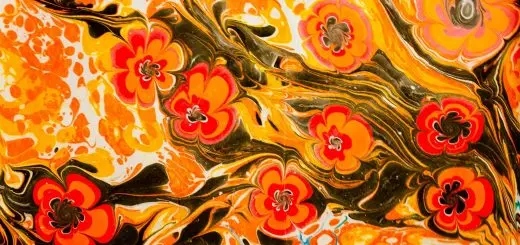The Pyramidion: Apex of Ancient Egyptian Pyramids

Looking for more amazing products? Check out our online store and explore our collection here! Happy shopping!
Before diving in, please note: This post is for informational purposes only. If you’d like to know more about how we approach topics, feel free to check out our friendly Disclaimer Page.
Hey there, amazing readers! 
We’re committed to delivering quality posts, and your support (even just sticking around despite the ads) means everything to us. So, bear with us, and thanks for helping us keep the good vibes rolling. Now, on to the fun stuff!
TRANSLATE BUTTON AT THE END OF THE ARTICLE
Overview
The Pyramidion, also known as the Benben Stone, is the iconic apex of ancient Egyptian pyramids.
It is a small pyramid-like structure that sits on top of the main pyramid, often made of granite or other durable materials.
The Pyramidion holds immense historical significance, both for its construction techniques and its symbolic and religious value to the ancient Egyptians.
This article will delve into various aspects of the Pyramidion, including its historical significance, construction and materials, symbolism and purpose, artistic features, role in ancient Egyptian religion, discovery and excavation, preservation and restoration, notable examples, influence on architecture and design, as well as the mysteries and unanswered questions surrounding these fascinating structures.
What is the Pyramidion?
The Pyramidion, also known as the "capstone" or "apex," is the uppermost part of an ancient Egyptian pyramid.
It is a small pyramid-shaped structure that completes the pyramid’s form.
The word "pyramidion" is derived from the Greek word "pyramis," meaning "pyramid." The Pyramidion is typically made of granite, limestone, or other durable materials, and is often highly decorated and inscribed with hieroglyphs and symbols.
It is believed to represent the sacred benben stone, an ancient Egyptian symbol of creation.
Historical Significance of the Pyramidion
The Pyramidion holds immense historical significance as it represents the completion of a pyramid and the culmination of the pyramid-building process.
It was considered the crowning glory of the pyramid and was believed to be the point of contact between the physical world and the divine realm.
The Pyramidion also served a practical function by protecting the apex of the pyramid from erosion and damage.
Construction and Materials of the Pyramidion
Pyramidions were constructed using various materials, with granite being the most commonly used due to its durability.
These structures were meticulously carved and shaped to achieve the desired pyramid-like form.
The construction process involved cutting and shaping the stone blocks, then carefully joining them together using precise techniques.
Builders often engraved hieroglyphs and symbols onto the surface of the Pyramidion, adding to its artistic and decorative features.
Symbolism and Purpose of the Pyramidion
The Pyramidion held significant symbolism and purpose in ancient Egyptian culture.
It was believed to represent the benben stone, a sacred symbol associated with creation and rebirth.
The benben stone was considered the first land emerging from the primordial waters and was associated with the sun god Ra.
The Pyramidion, therefore, symbolized the divine connection between the pharaoh, the sun god, and the afterlife.
It was also believed to act as a conduit between the mortal world and the heavens, allowing the pharaoh’s soul to ascend to the afterlife.
Artistic and Decorative Features of the Pyramidion
Pyramidions were not only symbolic but also highly artistic and decorative in nature.
They were adorned with intricate carvings, hieroglyphs, and symbols that conveyed religious and cultural significance.
The carvings depicted scenes from mythology, religious rituals, and the pharaoh’s divine role.
These decorative features showcased the exceptional craftsmanship and artistic skill of ancient Egyptian artisans.
Role of the Pyramidion in Ancient Egyptian Religion
In ancient Egyptian religion, the Pyramidion played a central role.
It was believed to provide a path for the pharaoh’s soul to ascend to the heavens and join the gods after death.
The Pyramidions were associated with the sun god Ra and were believed to receive his divine energy, symbolized by the rays of the sun.
The presence of the Pyramidion atop a pyramid was seen as a testament to the pharaoh’s divine authority and his connection with the gods.
Discovery and Excavation of Pyramidions
Pyramidions have been discovered and excavated at various ancient Egyptian pyramid sites.
Often, these structures were found in fragmented states due to erosion and damage over time.
Explore the Path to Spirituality and Enlightenment – Start Here.
Excavations have provided valuable insights into the construction techniques, artistic styles, and religious beliefs of the ancient Egyptians.
Scholars and archaeologists meticulously document and analyze these findings to gain a deeper understanding of ancient Egyptian culture.
Preservation and Restoration of Pyramidions
Preserving and restoring pyramidions is a challenging task due to their delicate nature and exposure to environmental factors over thousands of years.
Archaeological teams employ specialized techniques to stabilize and protect these artifacts.
In some cases, missing fragments are carefully reconstructed using advanced imaging and 3D printing technologies.
These preservation efforts ensure that the pyramidions continue to be studied and appreciated for generations to come.
Notable Examples of Pyramidions in Ancient Egypt
Several notable examples of pyramidions have been discovered in ancient Egypt.
One such example is the Pyramidion of Amenemhat III, found at Dahshur.
This beautifully carved granite structure depicts scenes of the pharaoh offering offerings to the gods.
Another remarkable pyramidion is the one belonging to King Senusret I, discovered at Lisht.
It features detailed inscriptions and symbols related to the pharaoh’s divine role and his connection to the sun god Ra.
Influence of Pyramidions on Architecture and Design
The Pyramidion’s influence extends beyond ancient Egyptian pyramids.
Its distinctive shape and symbolism have inspired architectural and design elements in various cultures throughout history.
The concept of a pointed apex or capstone can be seen in structures such as obelisks, church spires, and even modern skyscrapers.
The symbolic representation of a connection between the earthly and divine realms continues to be a powerful motif in architecture and design.
Mysteries and Unanswered Questions Surrounding Pyramidions
Despite extensive research and excavation, there are still mysteries and unanswered questions surrounding pyramidions.
One of the intriguing aspects is their removal from many ancient pyramids.
It is not entirely clear why pyramidions were often missing or dismantled.
Some theories suggest that they may have been repurposed or destroyed during various historical periods.
The precise methods used to lift and place these heavy structures on top of the pyramids also remain somewhat mysterious, as no direct evidence of the process has been discovered.
Conclusion
The Pyramidion, the apex of ancient Egyptian pyramids, holds immense historical, religious, and artistic significance.
These small pyramid-shaped structures completed the pyramids and acted as the crowning glory of the pharaoh’s monumental tombs.
Made from durable materials and adorned with intricate carvings and symbols, the Pyramidions symbolized the connection between the mortal realm and the divine.
Through ongoing archaeological research, we continue to unravel the mysteries surrounding these fascinating structures, deepening our understanding of ancient Egyptian culture and the profound beliefs that shaped it.

The Enlightenment Journey is a remarkable collection of writings authored by a distinguished group of experts in the fields of spirituality, new age, and esoteric knowledge.
This anthology features a diverse assembly of well-experienced authors who bring their profound insights and credible perspectives to the forefront.
Each contributor possesses a wealth of knowledge and wisdom, making them authorities in their respective domains.
Together, they offer readers a transformative journey into the realms of spiritual growth, self-discovery, and esoteric enlightenment.
The Enlightenment Journey is a testament to the collective expertise of these luminaries, providing readers with a rich tapestry of ideas and information to illuminate their spiritual path.
Our Diverse Expertise
While our primary focus is on spirituality and esotericism, we are equally passionate about exploring a wide range of other topics and niches 

To ensure we provide the most accurate and valuable insights, we collaborate with trusted experts in their respective domains 
Our blog originally focused on spirituality and metaphysics, but we’ve since expanded to cover a wide range of niches. Don’t worry—we continue to publish a lot of articles on spirituality! Frequently visit our blog to explore our diverse content and stay tuned for more insightful reads.
Hey there, amazing reader! 
Check out our store here and take a peek at some of our featured products below! Thanks for being awesome!















